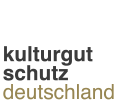Export regulations
The German Act on the Protection of Cultural Property (Kulturgutschutzgesetz, KGSG) and Regulation (EC) No 116/2009, which is directly applicable in Germany, impose a number of different obligations relating to export licences with reference to the nature of the cultural object, the planned duration of the export and the country of destination.
Regulations on national cultural property (Sections 22 and 23 KGSG)
Exports of national cultural property (Section 6 KGSG) always require an export licence if they relate to the following:
- objects entered into a directory of nationally valuable cultural property;
- publicly owned objects and objects belonging to the collections held by a public-law institution responsible for preserving cultural property;
- cultural objects belonging to the collections held by an institution responsible for preserving cultural property that is mainly funded through government grants; or
- cultural objects belonging to the collections held by a Land or federal art collection.
Different licensing procedures involving different authorities must be completed depending on whether a permanent export (for a period of more than five years) or merely a temporary export (for a period of less than five years) is envisaged:
Permanent exports of national cultural property are possible only in exceptional circumstances; pursuant to Section 23 KGSG, applications for such exports must be submitted to the Federal Government Commissioner for Culture and the Media as a result of their significance for the country as a whole.
- Pursuant to Section 22 KGSG, however, applications for temporary exports of national cultural property should be submitted to the competent authority in the Land in whose directory of nationally valuable cultural property the relevant objects are entered, or in which the institution whose collection contains the object in question is located.
Regulations on “other” cultural property (Section 24 KGSG)
The licensing requirements that apply to cultural property that does not qualify as national cultural property within the aforesaid meaning of the term are restricted in nature, and are based on the assignment of age and value thresholds to certain categories of cultural property.
Relevant categories of cultural property
A licence need be obtained only for cultural property that falls under the categories of Annex I(A) to Regulation (EC) No 116/2009 on the export of cultural goods. Certain categories of goods are automatically exempt from the need for a licence, such as stamp collections.
Age and value thresholds
Individual age and value thresholds are assigned to each category of cultural property within the aforesaid meaning of the term. Thresholds of this kind are a tool of EU law familiar to both the commercial and administrative sectors, and serve as an objective starting point for placing restrictions on licensing requirements and streamlining procedures. A licence is required only if the applicable age threshold and the applicable value threshold are exceeded. The age and value thresholds that apply to exports to a non-EU country (Section 24 (1) (1) KGSG/Regulation (EC) No 116/2009) are stricter than those that apply to exports within the EU (Section 24 (1) (2) KGSG).
An overview of the topic can be found in the table outlining the relevant categories and the associated age and value thresholds.
Applications for licences must be submitted to the competent Land authorities.
Right to a licence
Pursuant to Section 24 (5) KGSG, an applicant is entitled to a licence to export a cultural object provided that the export of said object is not prohibited (Section 21 KGSG). The deadline for a decision on an export licence application is 10 working days (Section 24 (7) sentence 1 KGSG).
Exemption from the licensing requirement within the EU
Even if the relevant age and value thresholds are exceeded, Section 24 (8) KGSG states that there is no licensing requirement for planned exports of cultural objects to the EU internal market if it can be shown that the relevant cultural object has been imported into Germany only for a temporary period of up to two years (based on the French model and therefore referred to as the “laissez passer” rule). In order for this rule to apply, however, the relevant cultural objects must have been imported lawfully into Germany, and must not previously have been exported unlawfully from Germany.
The rule applies to everyone and regardless of the reason why the cultural object is being imported. The parties involved must (in their own interest) document the import or export date by means of freight papers, insurance policies or other written records.
Blanket licences for streamlining temporary exports
The Act on the Protection of Cultural Property significantly simplifies the procedure for exporting cultural objects which require licences and which are frequently exported out of Germany on a temporary basis by providing for two types of special licences that dispense with the need for individual licences.
Streamlining of the procedure for cross-border loans by institutions responsible for preserving cultural property (Section 25 KGSG)
Pursuant to Section 25 KGSG, German institutions responsible for preserving cultural property – regardless of whether they are funded privately or publicly – can submit an application to the relevant competent Land authority for a “general open licence” for their entire collection; this allows the institution in question to streamline their regular loan procedures.
Licences granted pursuant to Section 25 KGSG can be used on a blanket basis for all exports over a period of up to five years, and obviate the need for any other export licences. They can be issued both for exports within the EU and for exports to non-EU countries.
Further information can be found in the section on Institutions responsible for preserving cultural property.
Streamlining of the procedure for repeated temporary exports of the same cultural object (Section 26 KGSG)
Section 26 KGSG provides the option of a “specific open licence”, granted by the competent Land authority in each instance, for cultural objects that are exported repeatedly out of Germany on a temporary basis. The licence relates to a specific cultural object and applies to all temporary exports of this object for a period of five years, and can be issued both for exports within the EU and for exports to non-EU countries. Licences of this kind can be useful for professional musicians who wish to take instruments (such as violins worth millions) on concert trips abroad, for example.



